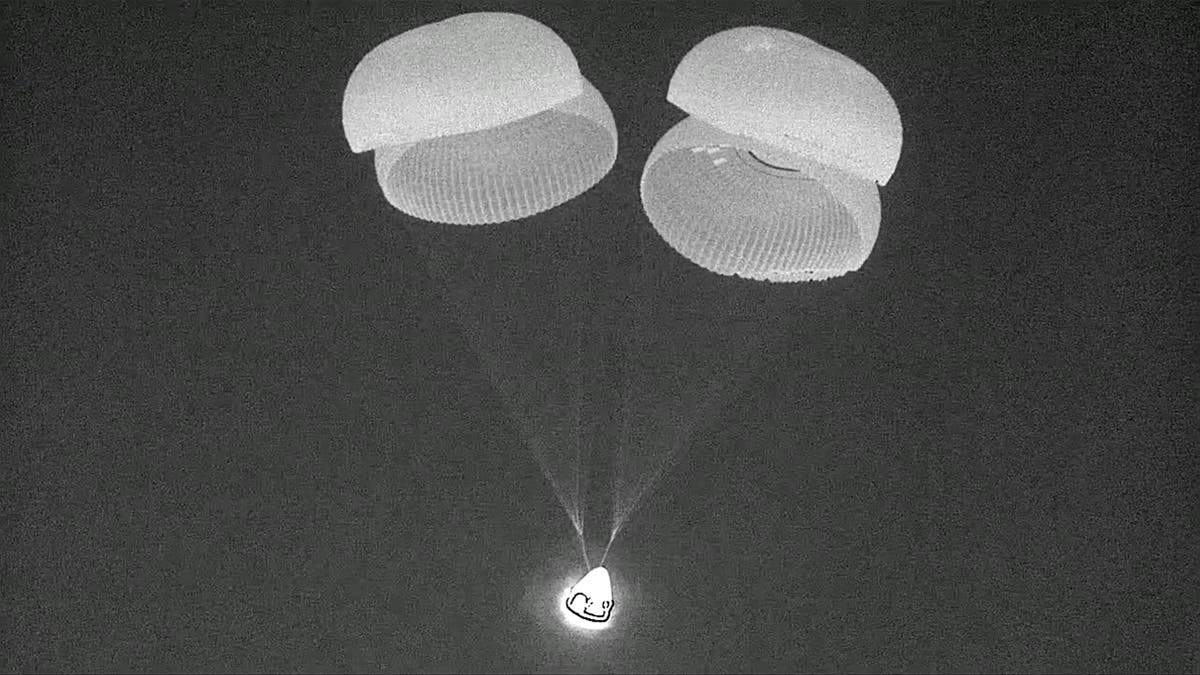
We finally have blast off! Four astronauts leave Earth for private spacewalk after weeks of delays due to bad weather
Daily MailFollowing a series of delays due to bad weather, the historic Polaris Dawn has finally blasted off to space. A SpaceX Falcon 9 rocket with the Crew Dragon Resilience capsule, carrying the crew of the Polaris Dawn Mission, lifts off from Launch Complex 39A at Kennedy Space Center in Cape Canaveral, Florida, on September 10, 2024 During their flight, Mr Isaacman and the rest of the crew will reach an altitude of 870 miles - higher than any crewed mission in more than half a century, since the Apollo era. On X, formerly Twitter, SpaceX founder Elon Musk noted that this mission would be the 'furthest from Earth that humans have been in over half a century' The Polaris Dawn mission had previously faced delays due to a helium leak on the ground and poor weather over the intended splash-down location Roughly ten minutes after launch the main engine cut off and detached, leaving the Dragon capsule to fly with its secondary booster. There were also concerns that today's Polaris Dawn mission could be delayed after Falcon 9 rockets were grounded by the FAA as one exploded during a failed landing SpaceX says that the astronauts will now spend two days in space breathing a high-oxygen gas mixture in a 'pre-breathe' process to prepare for the walk They will reach peak altitude on the first day of the mission when Polaris Dawn will briefly enter the Van Allen belt, where Earth's magnetic field traps extremely dangerous highly-charged particles. Having successfully launched, the Dragon capsule will now orbit Earth as it approaches the highest point of the mission in the Van Allen belt The Polaris Dawn crew will now spend the next two days purging any nitrogen from their blood which could lead to decompression sickness Moving from inside the pressurised capsule to the vacuum of space can cause any dissolved gasses in the bloodstream to expand into bubbles.
History of this topic

Billonaire-funded Polaris Dawn crew share what it was like to go further in space than any human for 50 years
The Independent
Billionaire rocketman who made historic first private spacewalk on SpaceX Polaris Dawn mission back on earth waving after splashdown landing
Daily Mail
US Polaris Dawn mission crew returns to Earth
China Daily
SpaceX Polaris Dawn as it happened: Billionaire attempts first private spacewalk from SpaceX Dragon
The Independent
Billionaire Jared Isaacman COMPLETES historic SpaceX Polaris Dawn private spacewalk and gives emotional first words: 'From here Earth sure looks like a perfect world'
Daily Mail
SpaceX rocket lifts off with crew set to attempt first commercial spacewalk
Hindustan Times
SpaceX launches Polaris Dawn mission to make first private spacewalk
Al Jazeera
Billionaire astronaut set for space walk finally blasts off on SpaceX rocket
LA TimesSpaceX delayed Polaris Dawn launch by at least 1 day, due to weather and technical issues
The Hindu
SpaceX Polaris Dawn Mission to launch on August 27 with plans for private spacewalk: All you need to know
India TV NewsDiscover Related










)


























